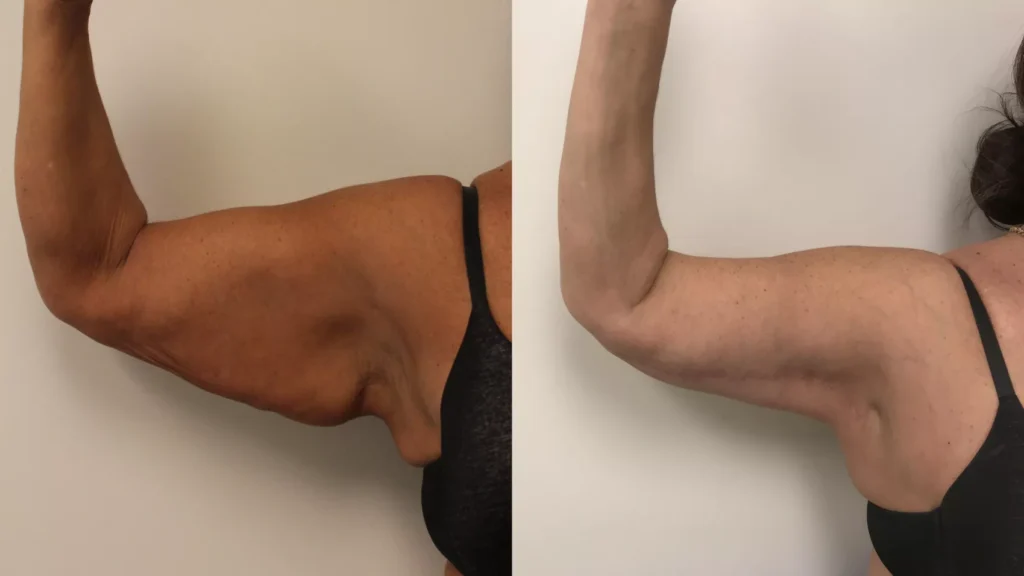
With an increase in bariatric surgery (gastric banding and gastric bypass) to treat patients with obesity, there has been a marked increase in the number of reconstructive plastic surgery procedures to treat excess skin.
Known by the common name of upper arm lift, arm lift surgery (Brachioplasty) is a procedure that has increased in popularity from 2,500 cases ten years ago, to over 20,000 currently. During this time, the procedure has also undergone its own metamorphosis.
Due to an emphasis on surgical procedures to have smaller incisions and shorter scars, most techniques nowadays involve liposuction of the upper arm combined with the removal of skin from the armpit area. The scar is not only very well hidden, but most of the hair-bearing skin is removed along with the sweat gland areas of the armpit. For patients who have had massive weight loss, the procedure can also target the lateral chest and back areas plagued by excess skin.
Brachioplasty is performed as an outpatient procedure under local anesthetic with sedation or general anesthetic. The results are quite dramatic once the skin tightens. Patients are no longer bothered by the appearance of so-called “bat wings” and can feel confident bearing their arms in public.
Frequently Asked Questions
Brachioplasty, or arm lift surgery, is typically recommended for individuals who have excess skin and fat deposits in their upper arms, often due to weight loss or aging. Good candidates generally:
- Have significant excess skin and fat in the upper arms.
- Are in good overall health with no medical conditions that could impair healing.
- Have realistic expectations about the outcomes of the surgery.
There are a few variations of brachioplasty:
- Traditional brachioplasty: Removes excess skin and fat from the underarm area to the elbow.
- Extended brachioplasty: Addresses excess skin not only in the upper arm but also extends into the chest or back area.
- Minimal incision brachioplasty: Involves smaller incisions, suitable for patients with less severe skin laxity.
- Recovery: Typically involves wearing compression garments, managing swelling, and avoiding strenuous activities for several weeks. Full recovery can take several months.
- Risks: Potential risks include infection, scarring, numbness, and fluid accumulation. These risks can be minimized by following post-operative care instructions closely.
- Long-term results include improved arm contour and reduced excess skin, contributing to a more toned appearance.
- Maintaining a stable weight and adopting a healthy lifestyle can help prolong the results of the surgery.
- Costs vary depending on factors such as the surgeon’s expertise, location, facility fees, anesthesia, and extent of the procedure.
- In the United States, brachioplasty costs typically range from $5,000 to $10,000 or more.

